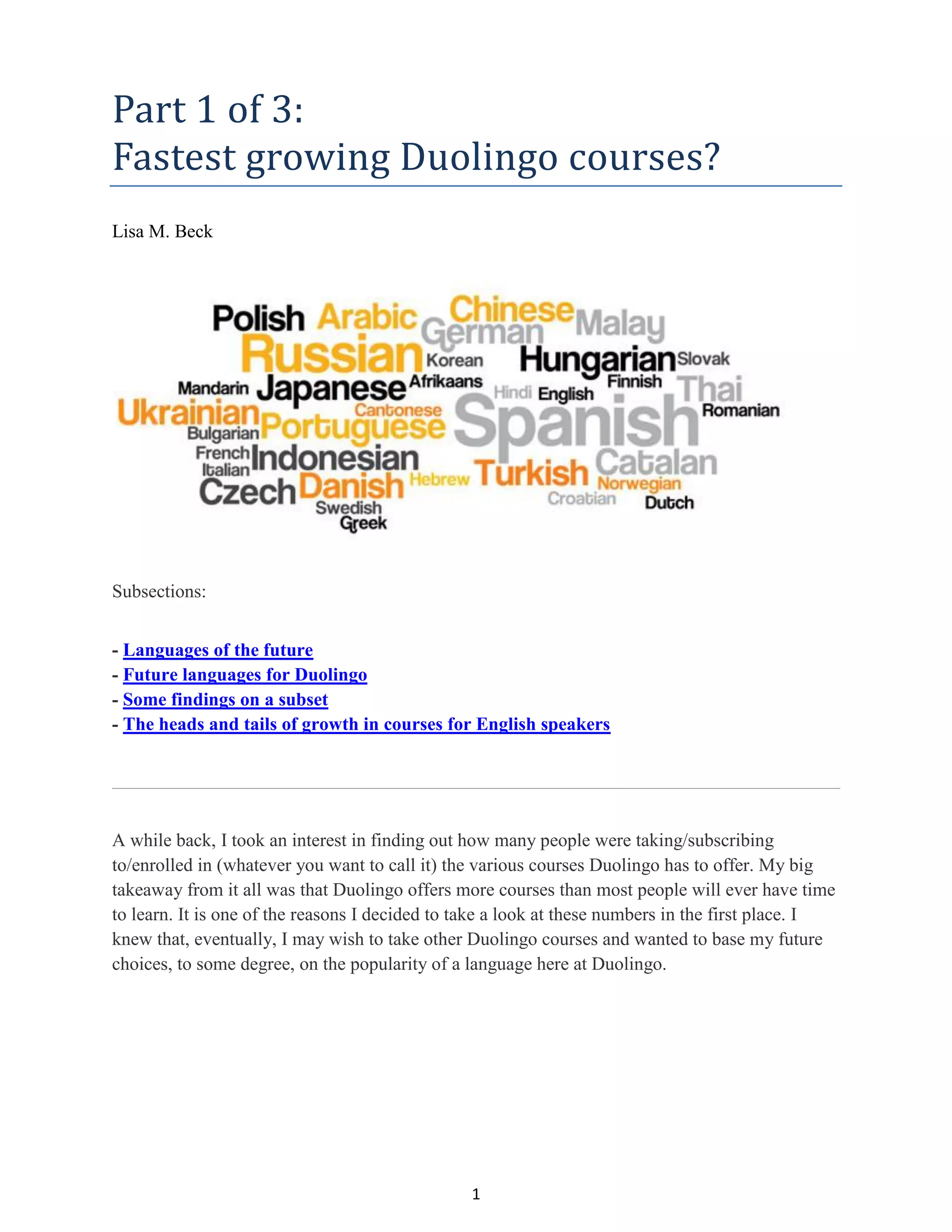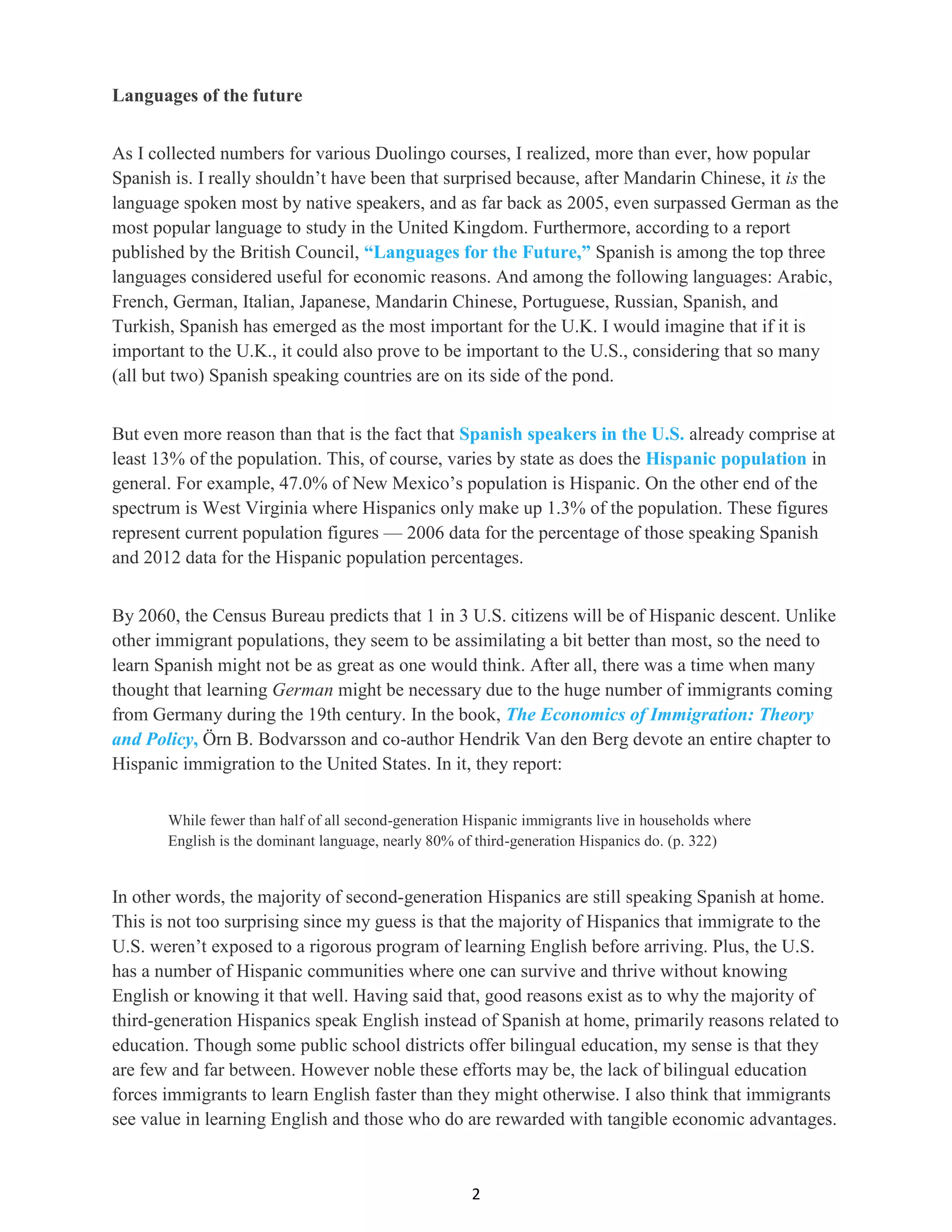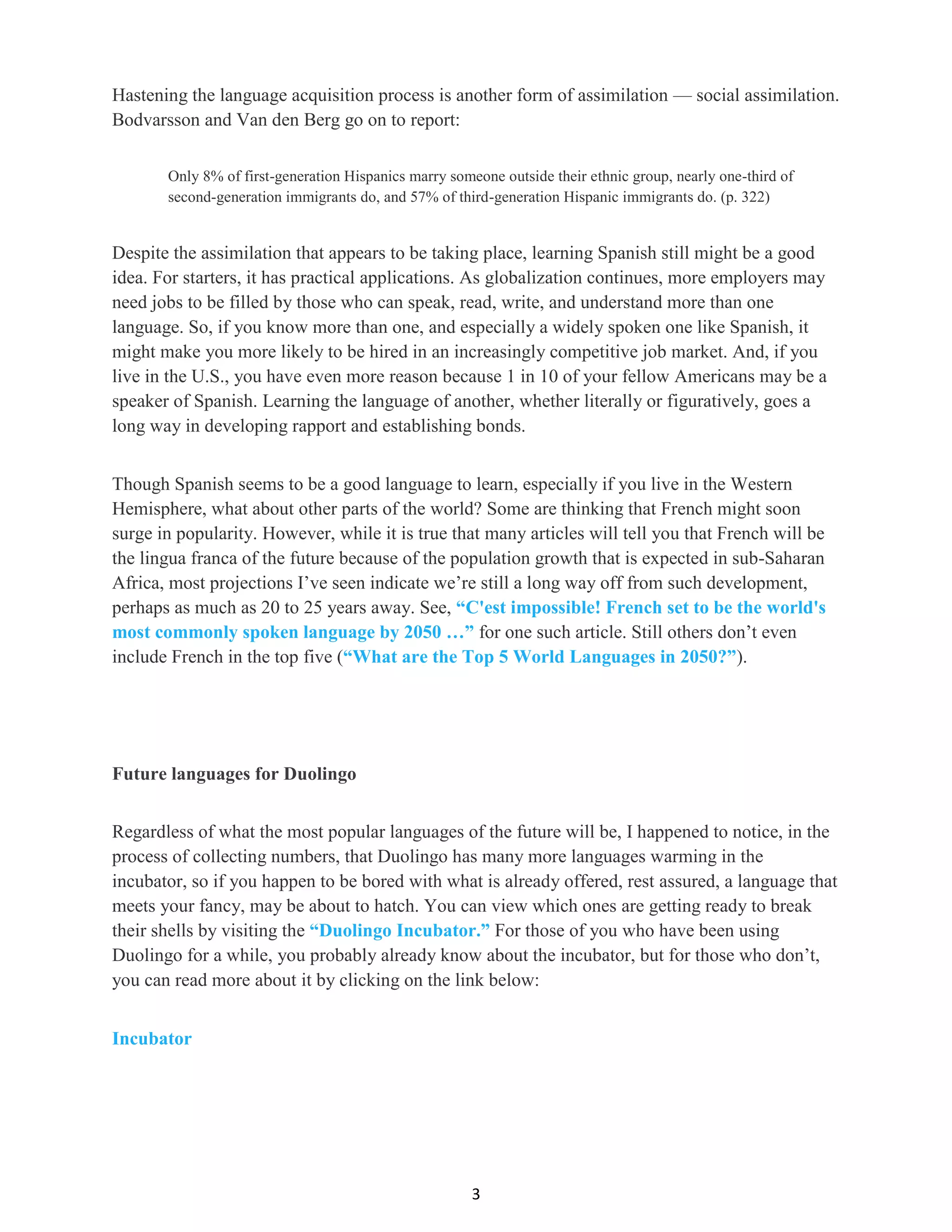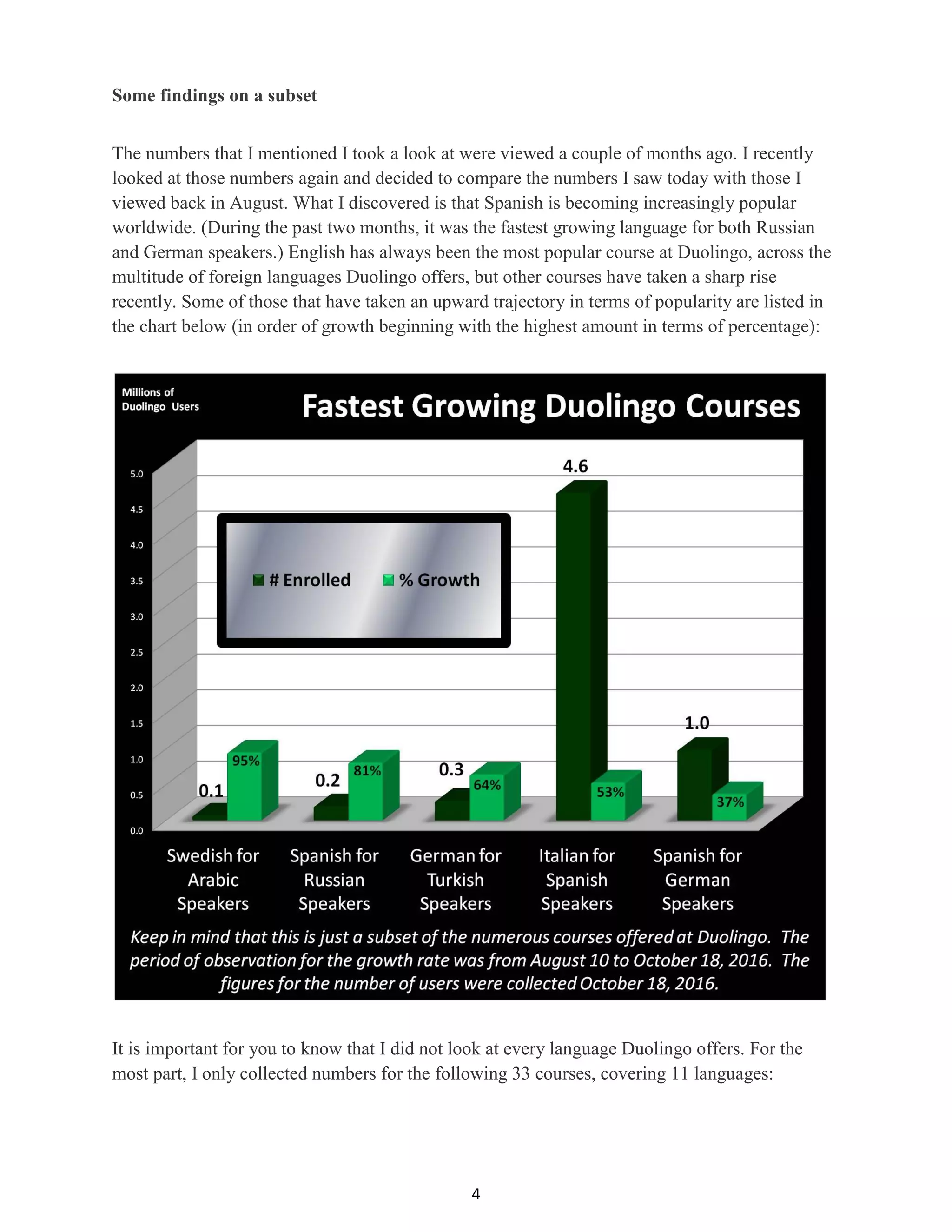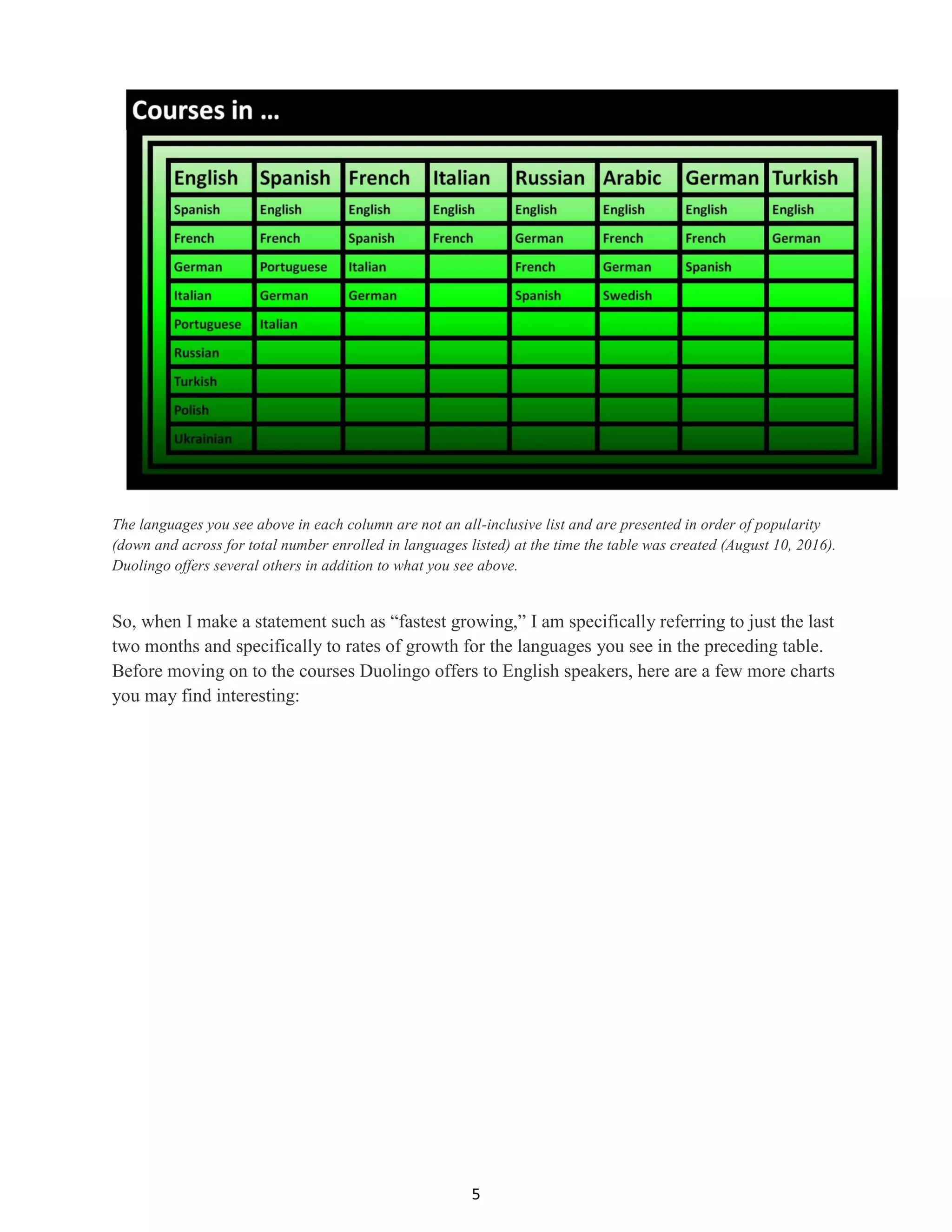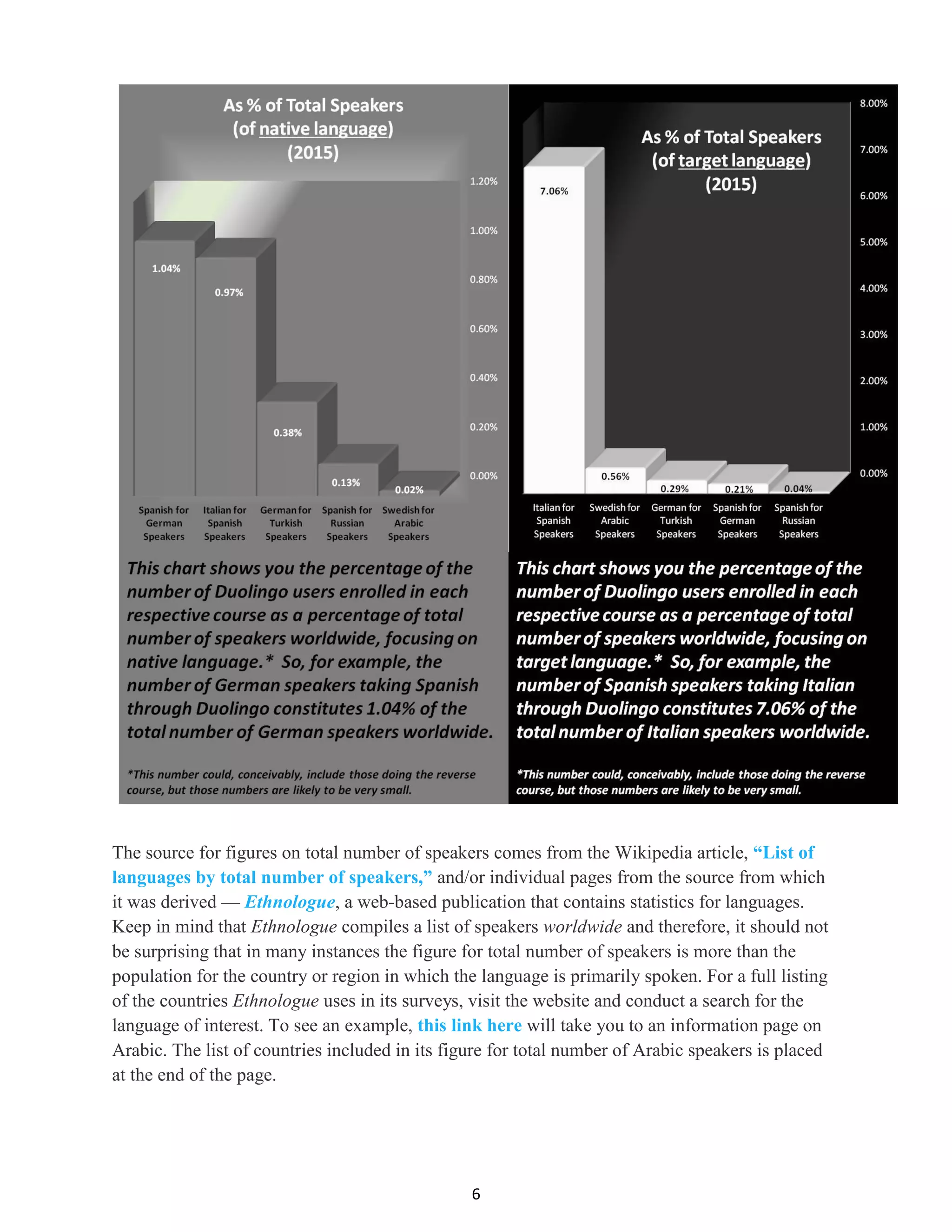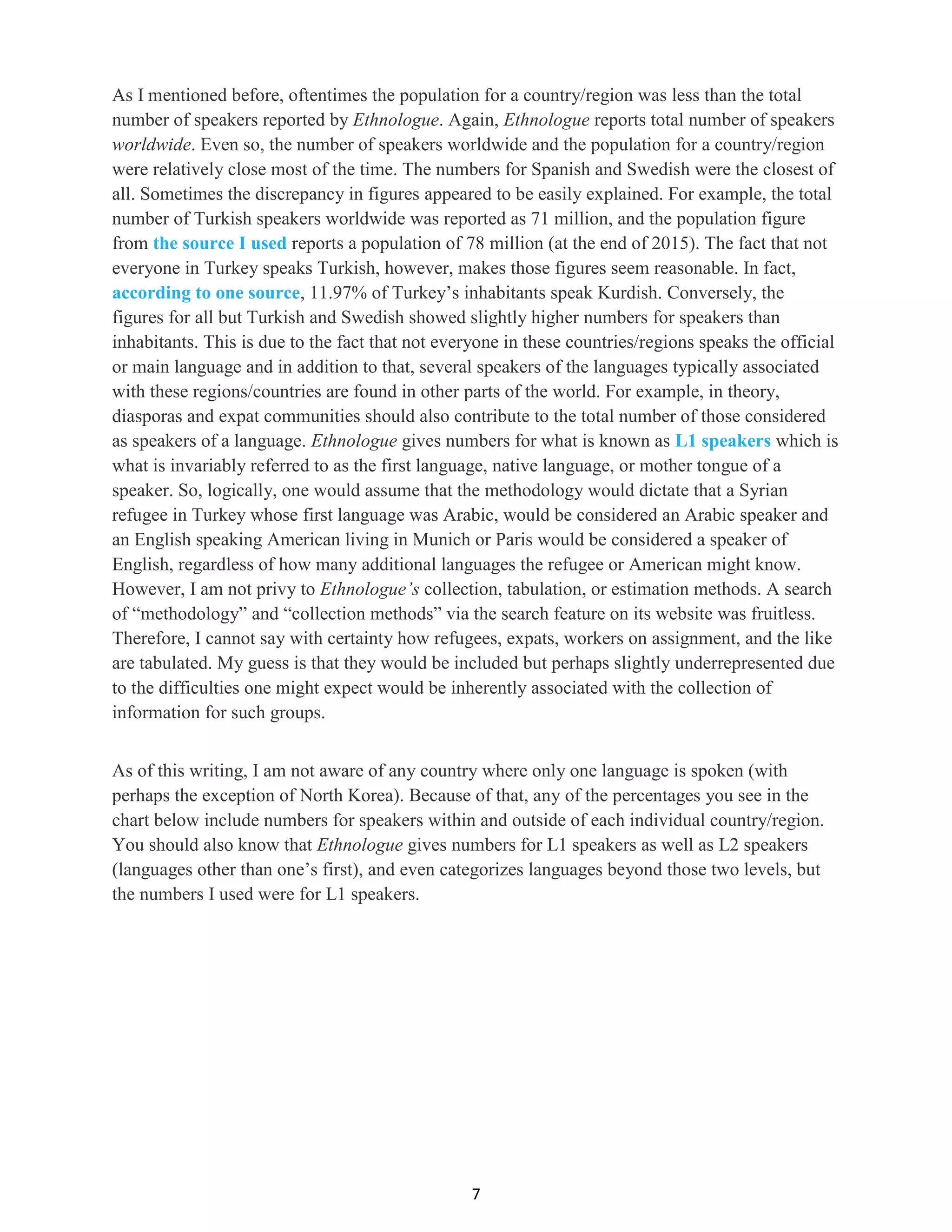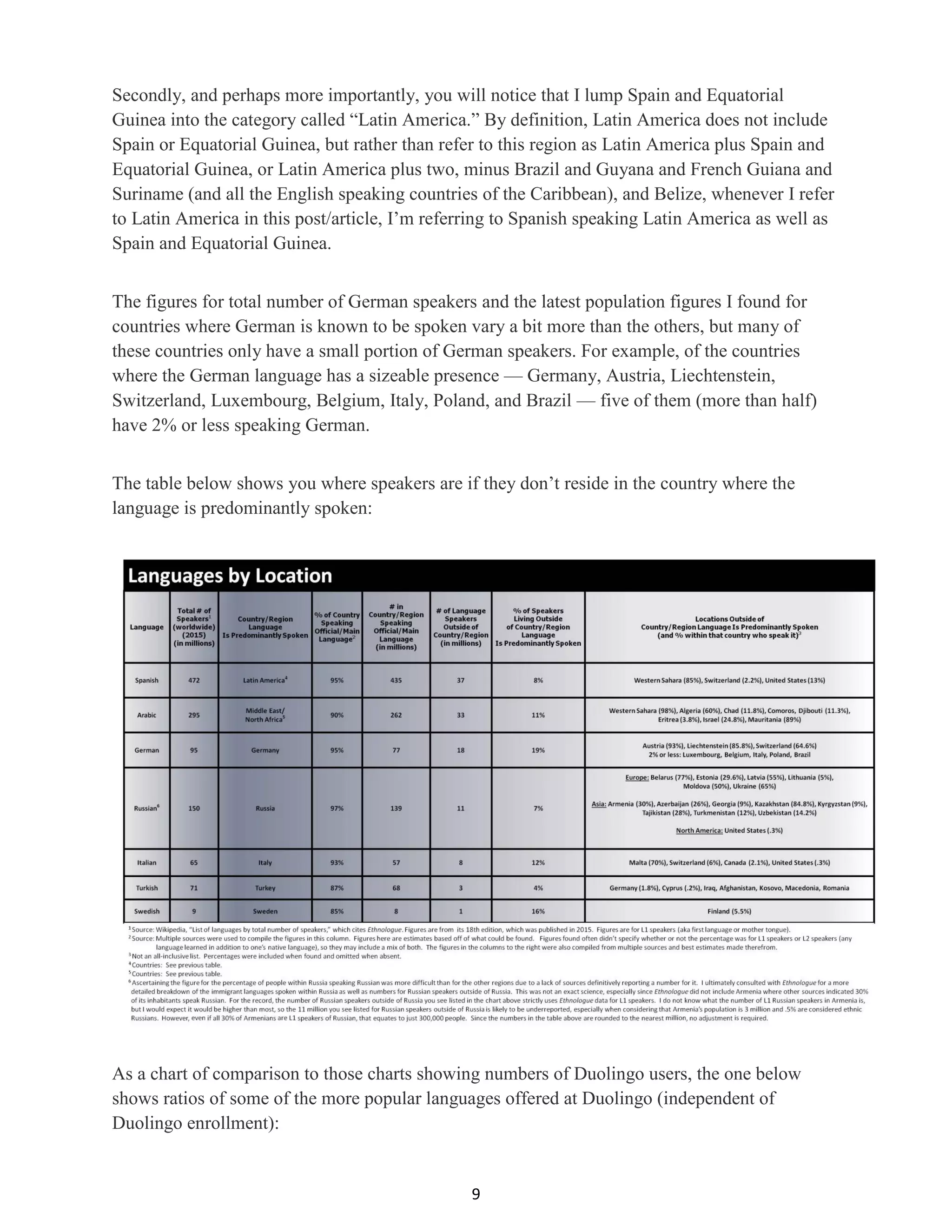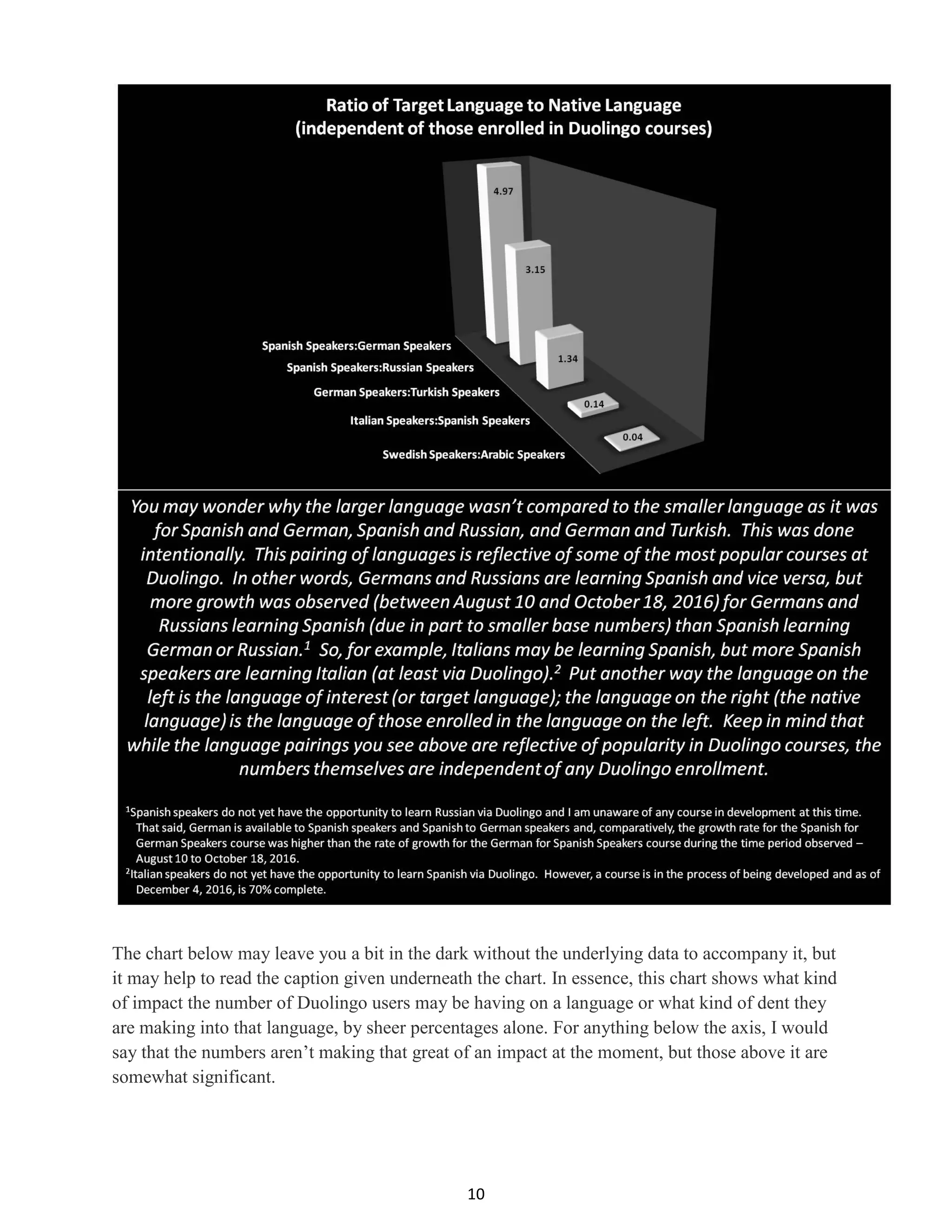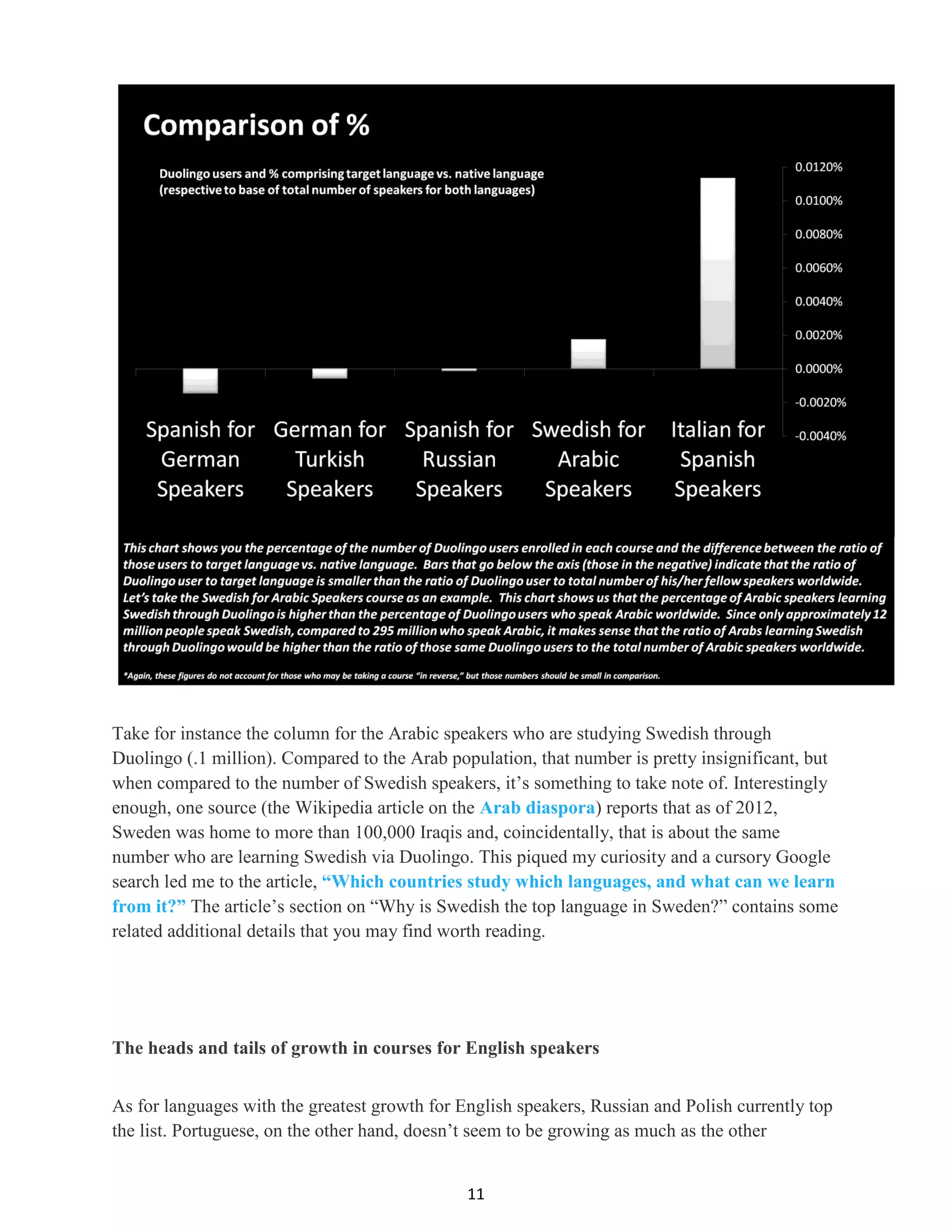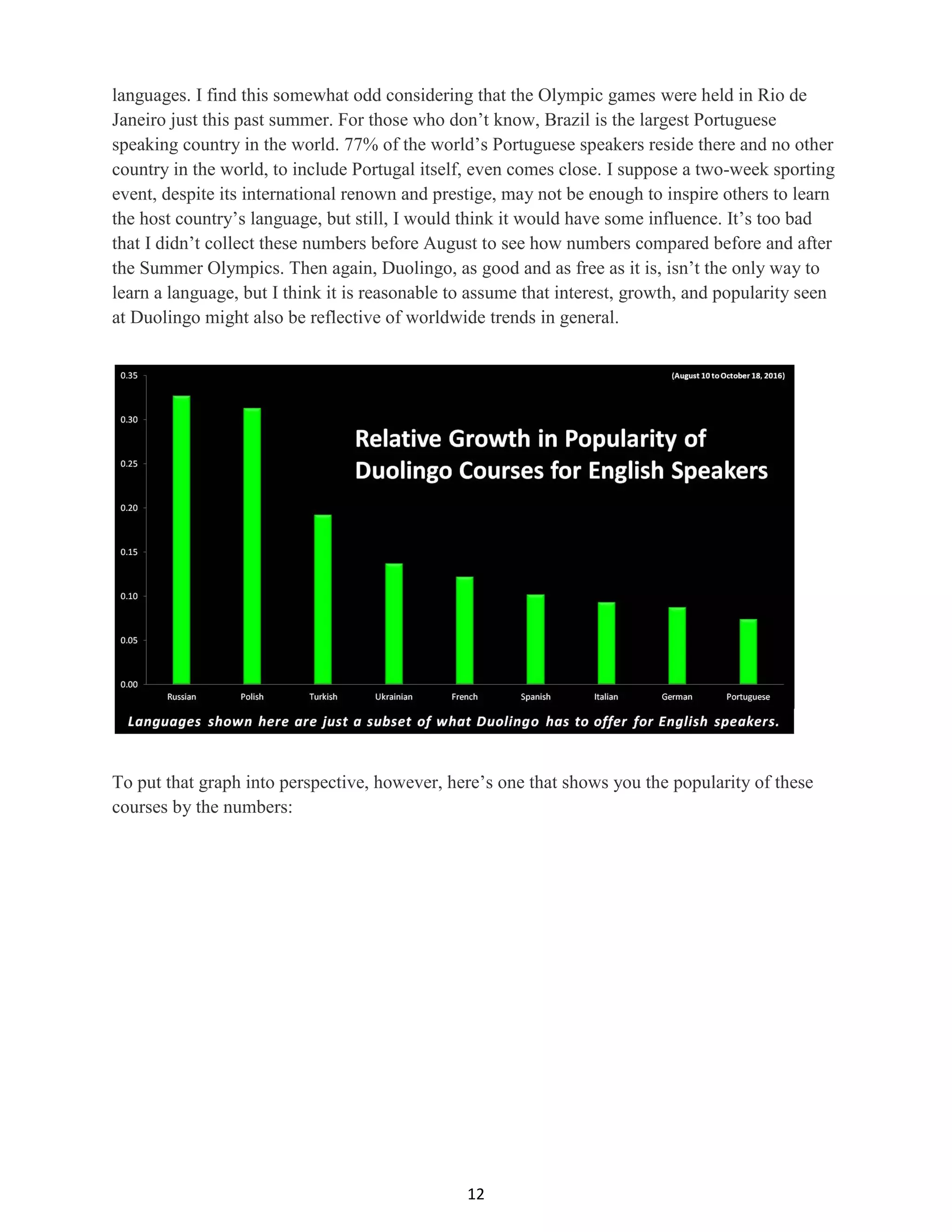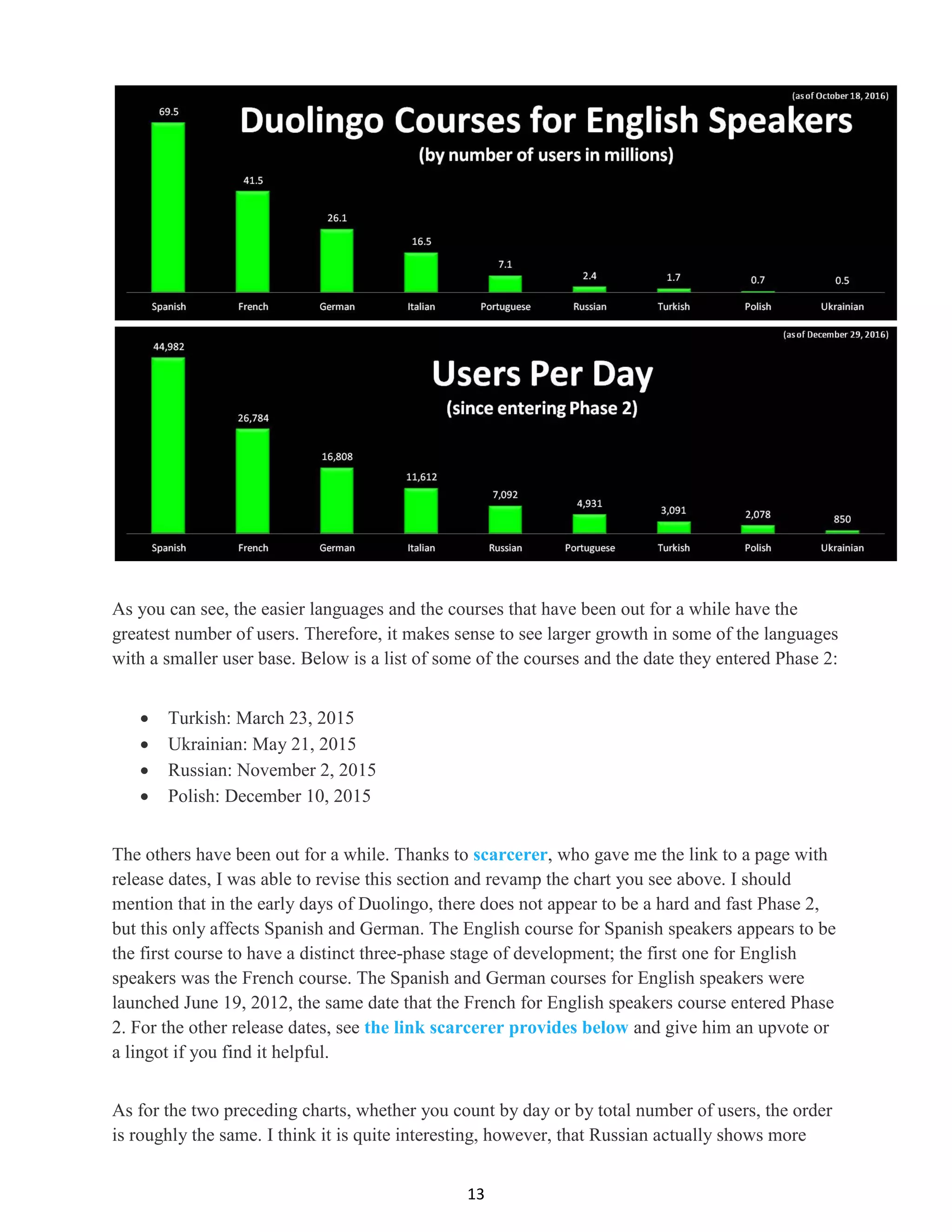Spanish is the fastest growing language on Duolingo. It has overtaken German as the most popular foreign language studied in the UK and is considered one of the top three most useful languages for economic reasons. By 2060, 1 in 3 US citizens will be of Hispanic descent. Russian and Polish are currently the fastest growing languages for English speakers on Duolingo. Portuguese growth has been slower than other languages despite the 2016 Olympics being held in Brazil.
